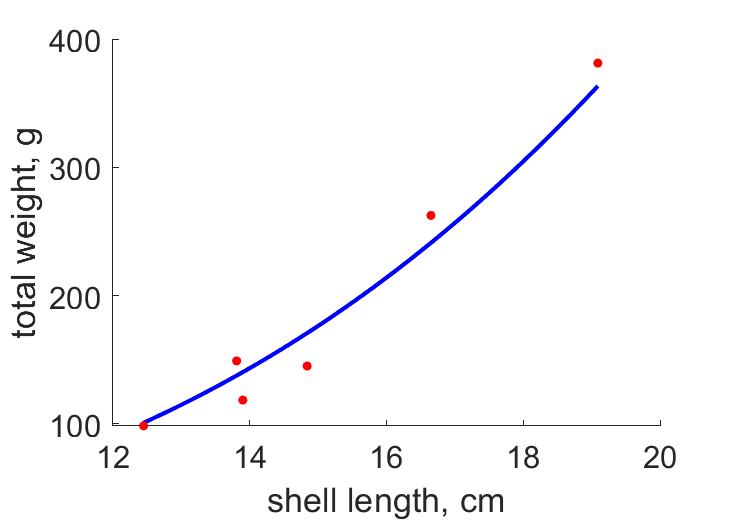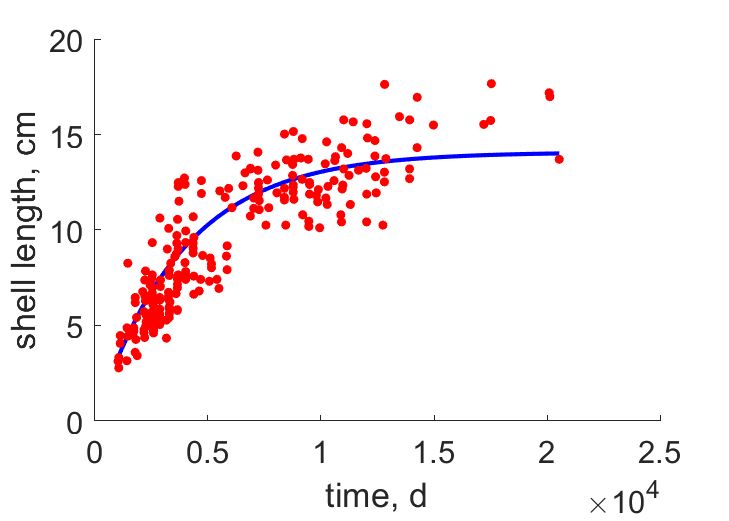Predictions & Data for this entry
| Model: abj | climate: Cfa, Dfa | migrate: | phylum: |
| COMPLETE = 2.6 | ecozone: THn | food: bjTvf, jiPp | class: |
| MRE = 0.113 | habitat: 0iFr, 0iFp | gender: D | order: |
| SMSE = 0.027 | embryo: Fbb | reprod: O | family: |
Zero-variate data
| Data | Observed | Predicted | (RE) | Unit | Description | Reference |
|---|---|---|---|---|---|---|
| ab | 10 | 3.806 | (0.6194) | d | age at birth | unio |
| am | 2.044e+04 | 2.044e+04 | (9.722e-05) | d | life span | Baird2000 |
| Lb | 0.02 | 0.01396 | (0.3022) | cm | shell length at birth | unio |
| Lj | 0.03 | 0.01396 | (0.5348) | cm | shell length at settlement | unio |
| Lp | 6 | 5.95 | (0.008352) | cm | shell length at puberty | Baird2000 |
| Li | 18 | 18 | (6.622e-05) | cm | ultimate shell length | Baird2000 |
Uni- and bivariate data
| Data | Figure | Independent variable | Dependent variable | (RE) | Reference |
|---|---|---|---|---|---|
| LN |  | shell length | fecundity | (0.1859) | Baird2000 |
| LWw |  | shell length | total weight | (0.08714) | Baird2000 |
| tL |  | time | shell length | (0.145) | Baird2000 |
Pseudo-data at Tref = 20°C
| Data | Generalised animal | Cumberlandia monodonta | Unit | Description |
|---|---|---|---|---|
| v | 0.02 | 0.002821 | cm/d | energy conductance |
| kap | 0.8 | 0.9861 | - | allocation fraction to soma |
| kap_R | 0.95 | 0.95 | - | reproduction efficiency |
| p_M | 18 | 22.31 | J/d.cm^3 | vol-spec som maint |
| k_J | 0.002 | 0.002 | 1/d | maturity maint rate coefficient |
| kap_G | 0.8 | 0.8014 | - | growth efficiency |
Discussion
- Males are assumed not to differ from females
- Energy conductance is very low, but attemps to increase it affected goodness of fit
Facts
- no hermaphrodism found (Ref: Baird2000)
Bibliography